In our travels through the city the past few weeks, Mayapples have dominated the herbaceous layer of the forest-scape, with their pretty leaves and stunning waxy blooms. Â Today we are going to feature a few plants we found associated with the Mayapples, in two locations, within a mile apart in the Roxborough section of Philadelphia.
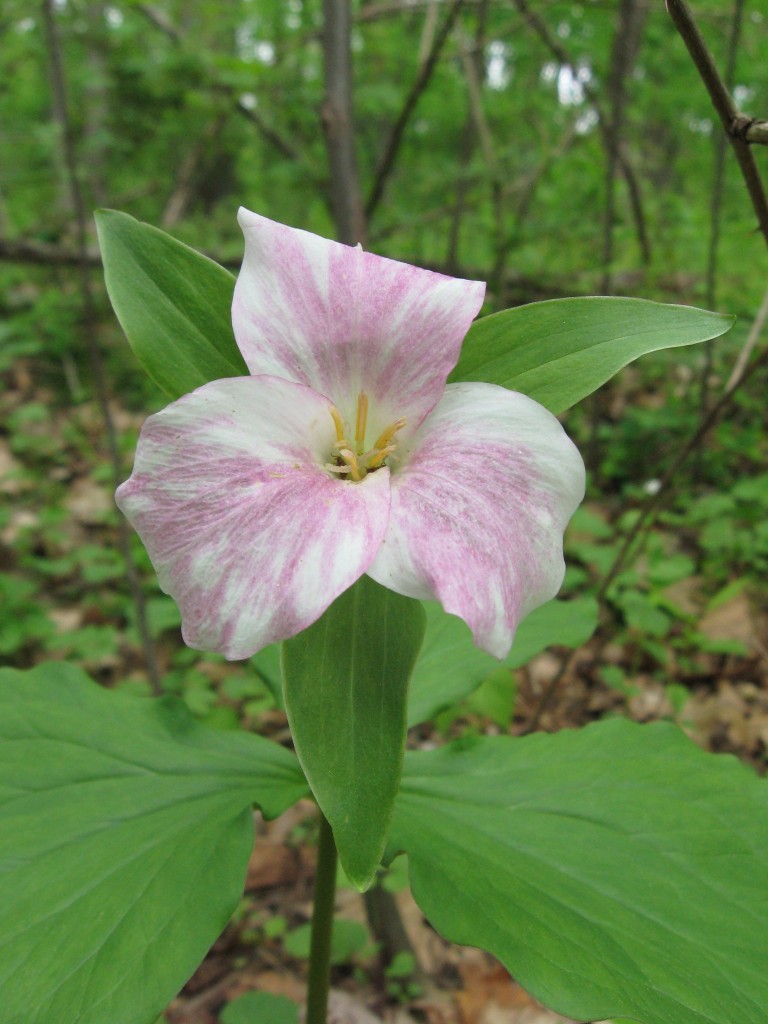
The Schuylkill Center has a great woods, full of surprises.  They also had a  native plant sale, where we purchased a Hearts-A-Bustin’ Strawberry bush, the Euonymus  americana for our yard.  We then went for a walk on the grounds, and we went to Penns Acres, a section of woods enclosed in deer fencing to protect the plants from browsing. Thats where we saw this aging Trillium grandiflorum pictured above.  When the flower gets older, it turns pink.
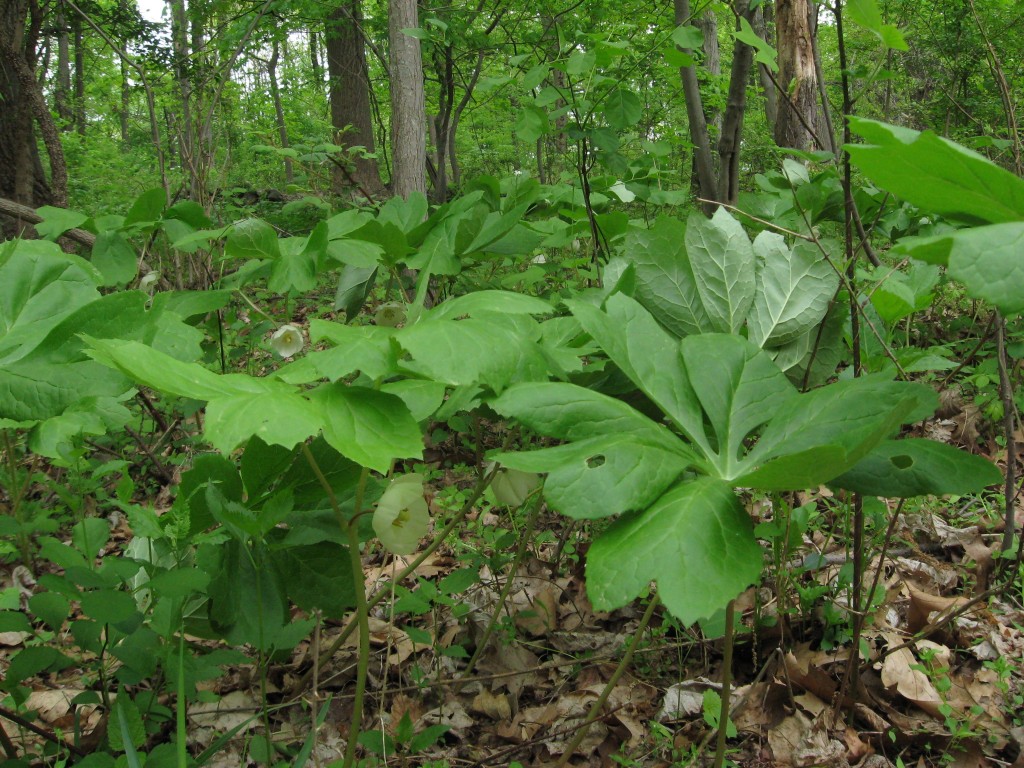
This is the world of the Mayapple!
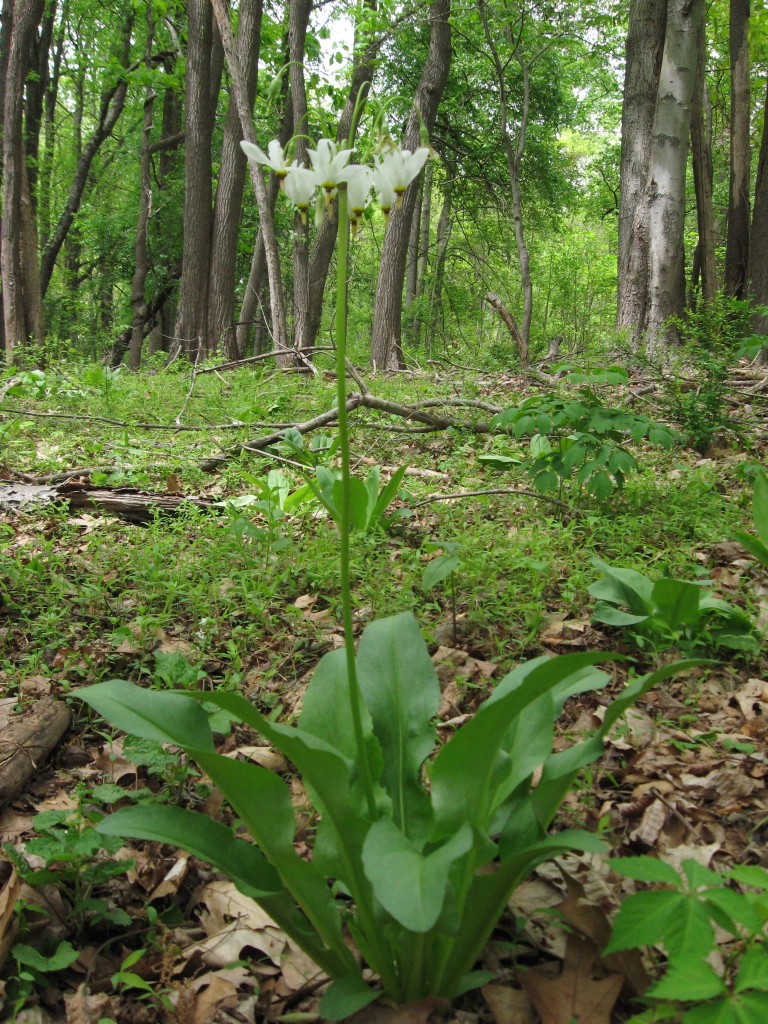
Dodecatheon meadia
Finding the Shooting Star blooming was a pleasant and unexpected surprise. Â The only one we had ever seen was the two specimens in our yard which are also currently in bloom.
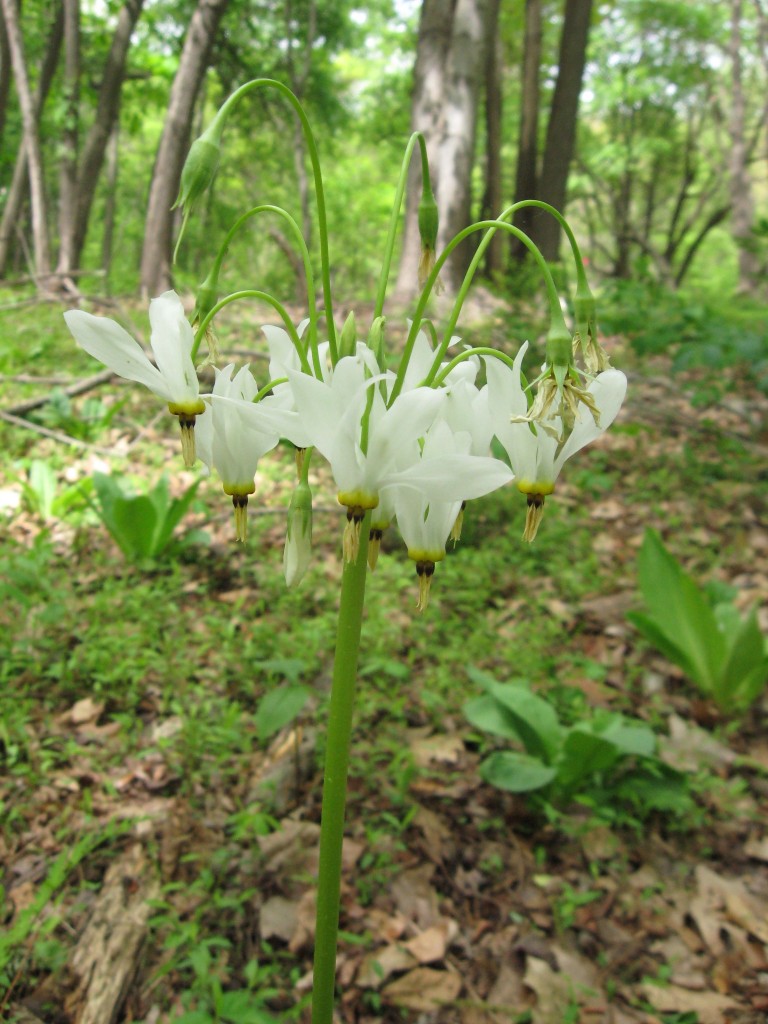
The flower is like a chandelier or a fountain. Available in local native plant nurseries and plant sales.
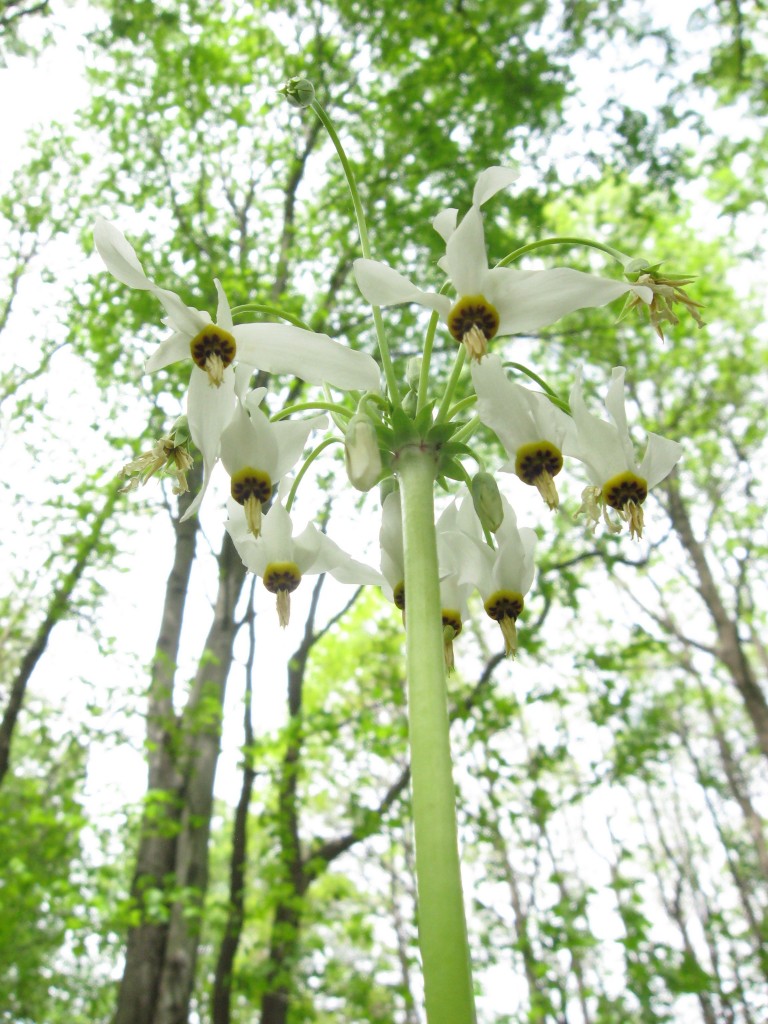
For the flower enthusiast, this place has everything, right here in the city as well.  The friendly staff gave us a trail map that helped us to find the trails that  led off the beaten paths, deep into the woods. We saw Dogwoods flowering all over, with Bluebells, patches of Mayapple and Trillium, Redbud trees, Jack-in-the Pulpit, and Black and Blue cohosh.
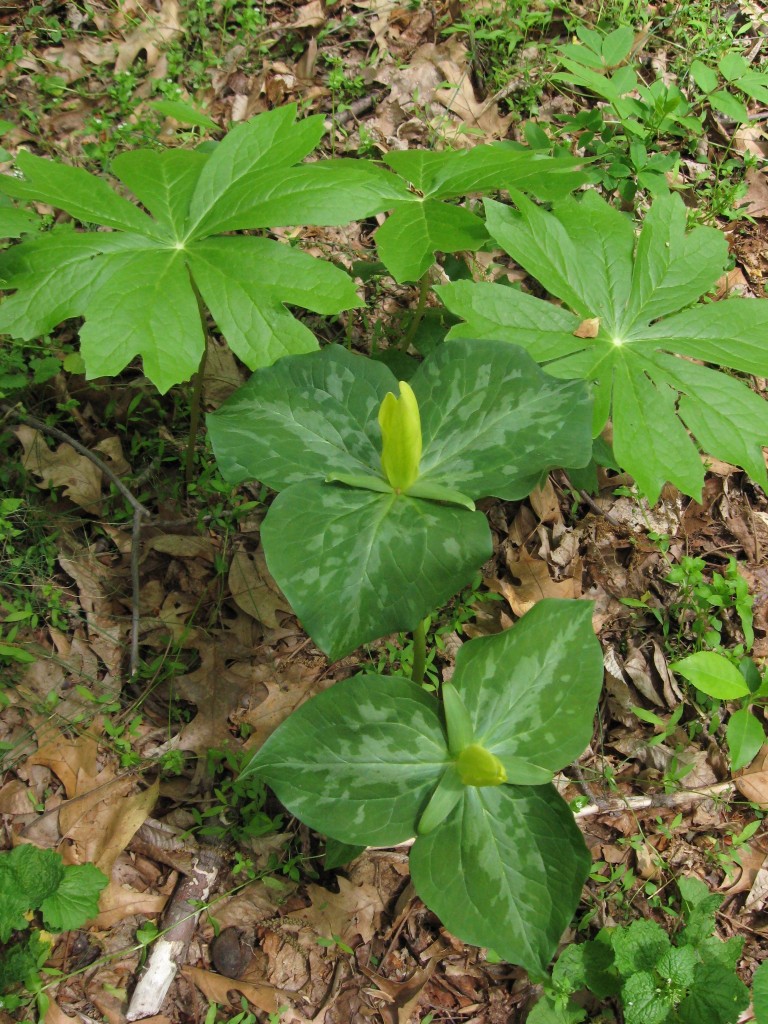
We had never seen this Sessile Trillium before in the City of Philadelphia. We much admired these specimens, but wondered about their origins. Could they have been introduced, or are they just growing naturally?
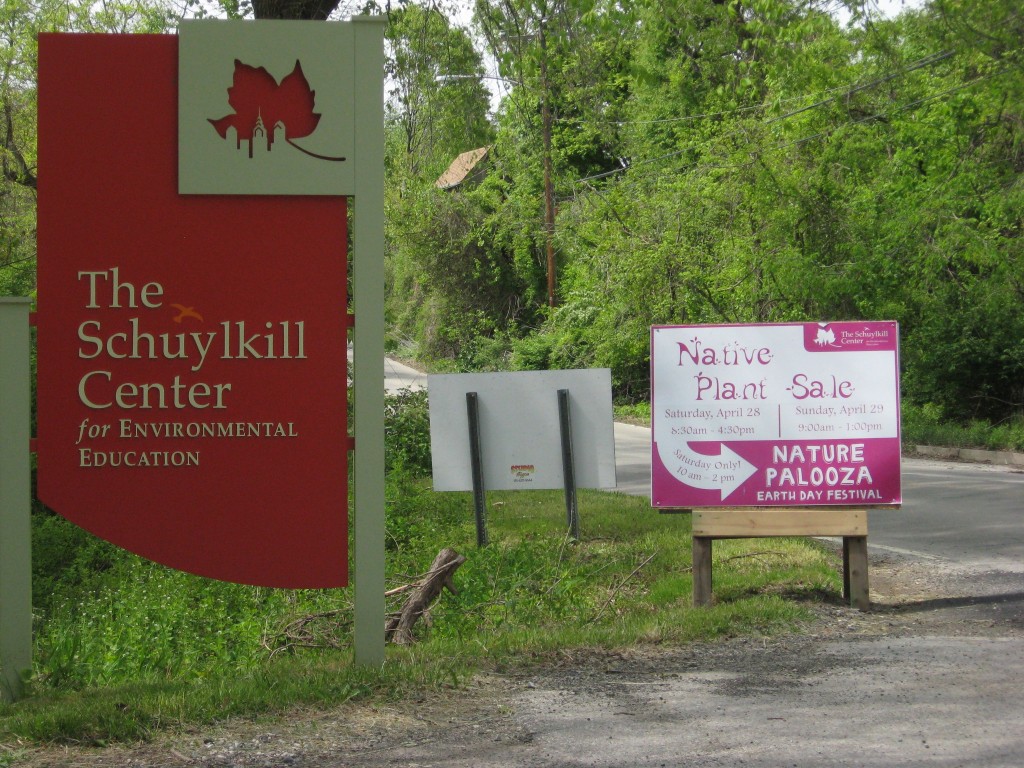
Now, off to the Wissahickon!
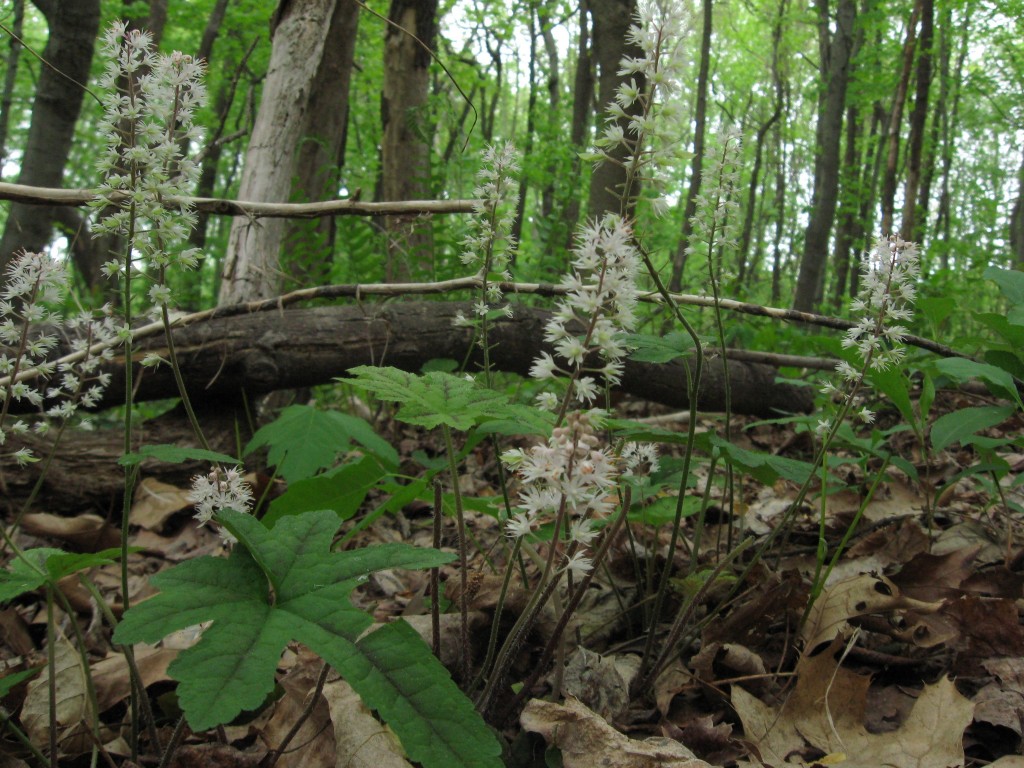
We found the Foamflower near Bells Mill Road.
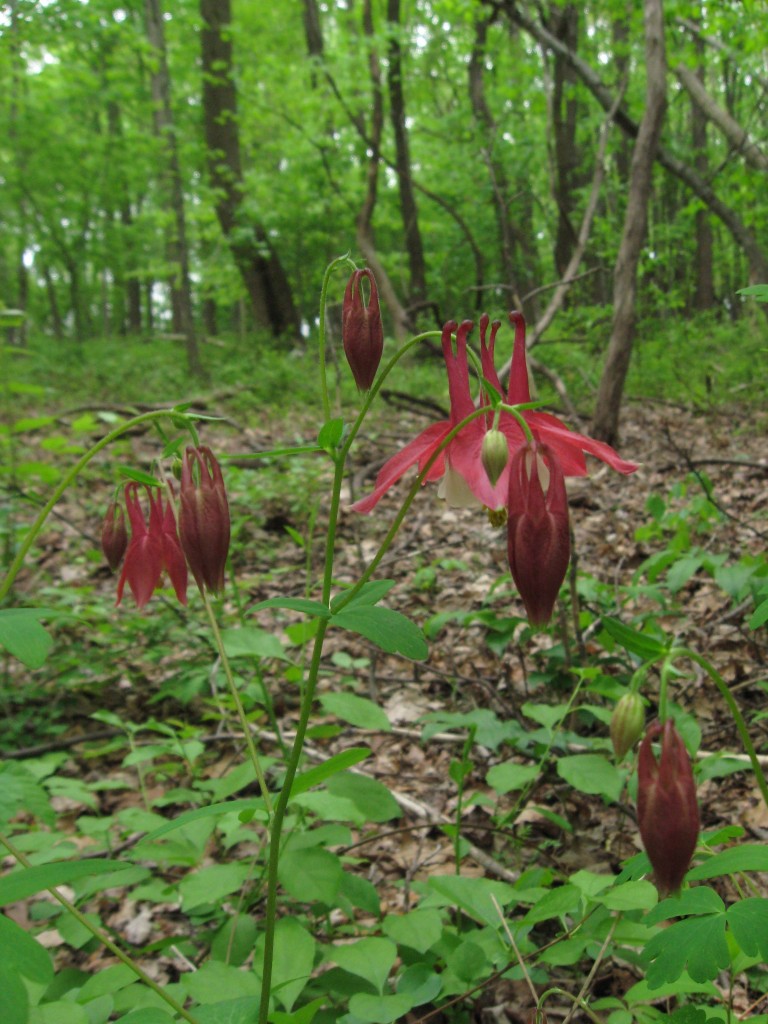
And then a whole colony of Columbine! Â We were so enchanted with the wildflowers, we got lost! Â We were on some obscure trails we had never been on before and lost our way. In every direction were tall Tulip Poplars. We walked for over an hour in nothing but deep forest, full of Spicebush, Bloodroot, Mayapple, Sensitive and Christmas fern, and we even found a blooming Pinxter Azalea!
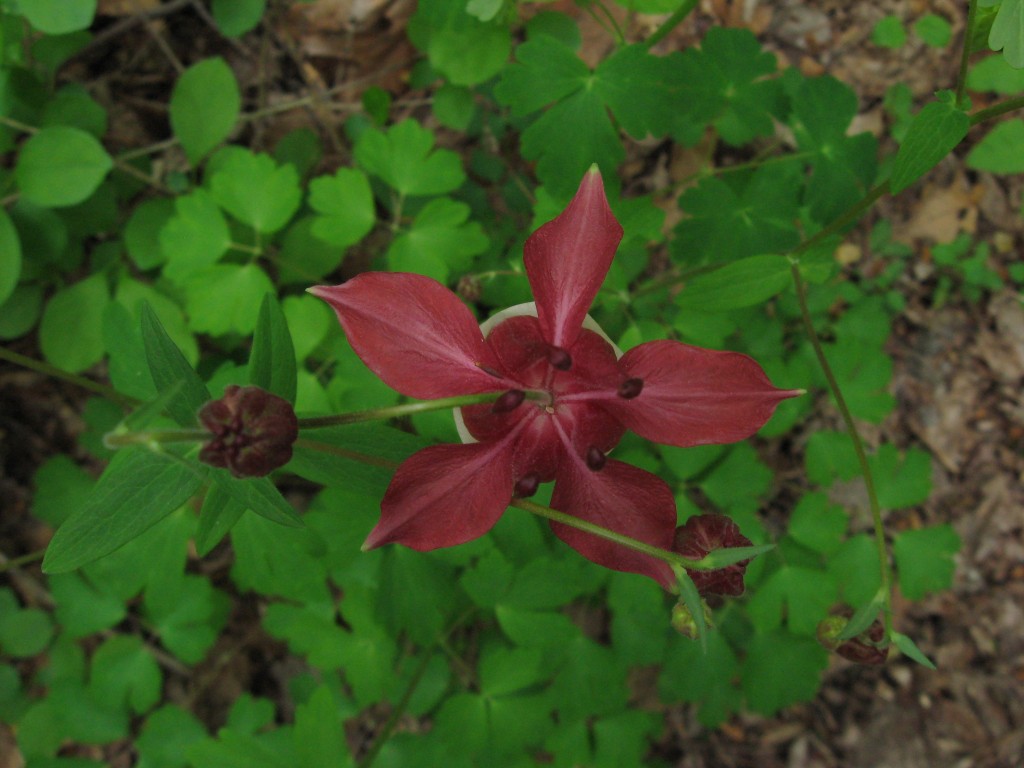
At one point we were so lost we started to worry about how to get back, and we passed a charming ravine, and we spotted blue specks below us and they caught our eyes, and we decided to investigate.
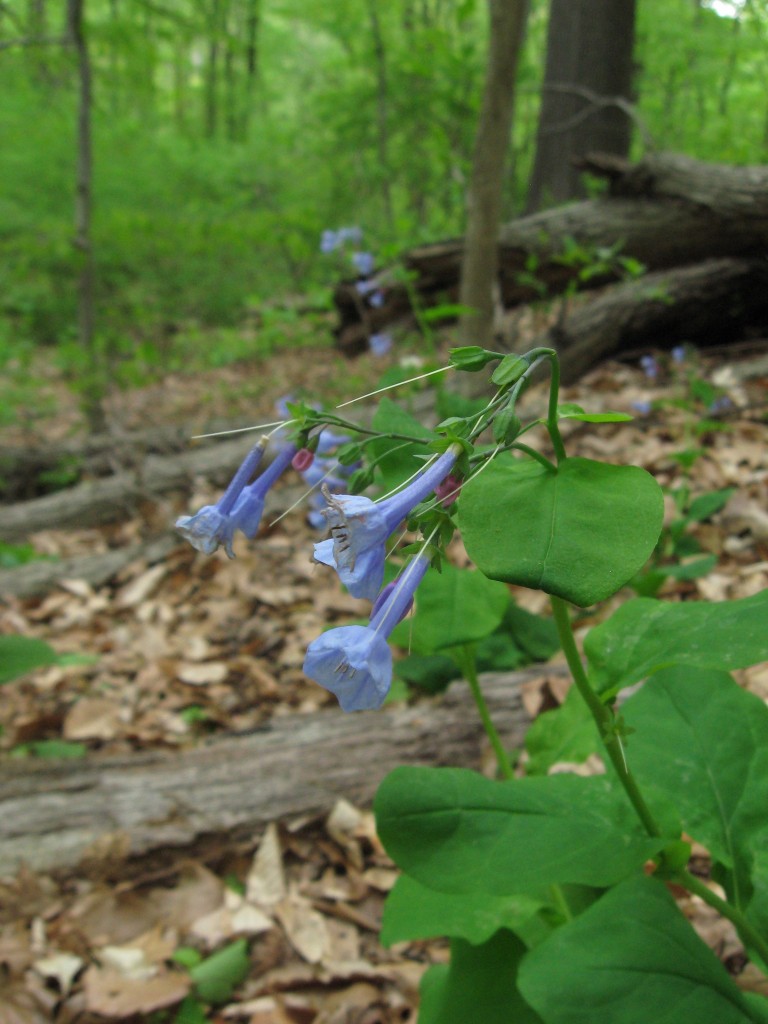
Bluebells!
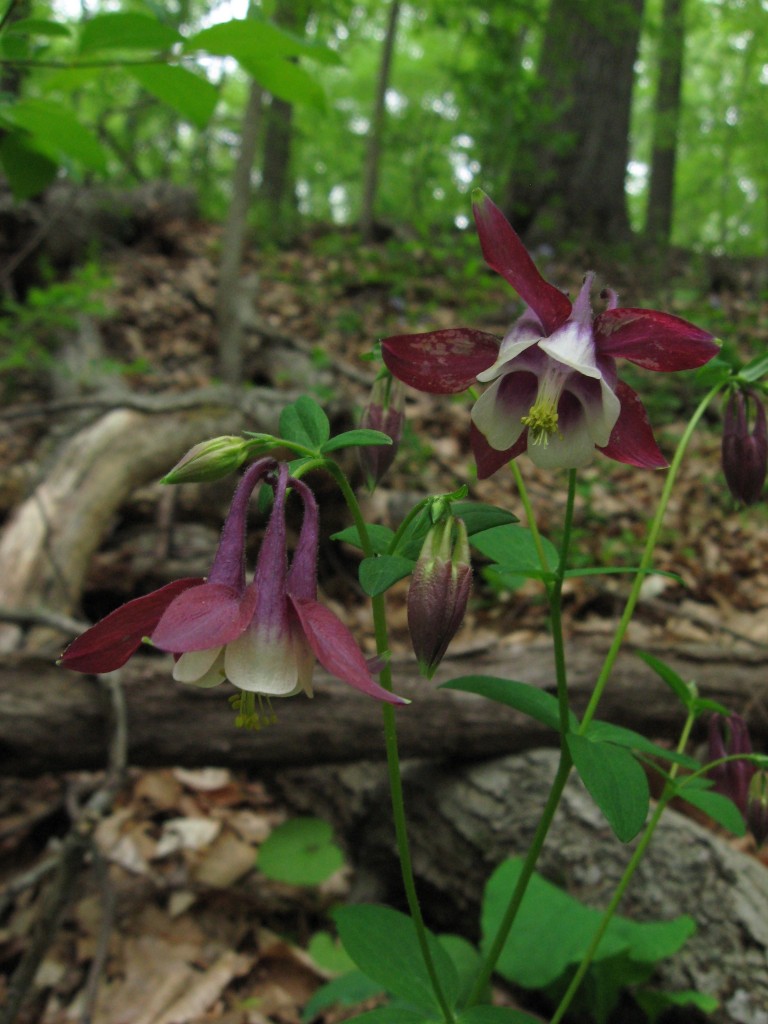
More Columbine, with a dark maroon color, blooming alongside the  bluebells in a protected, obscure ravine.
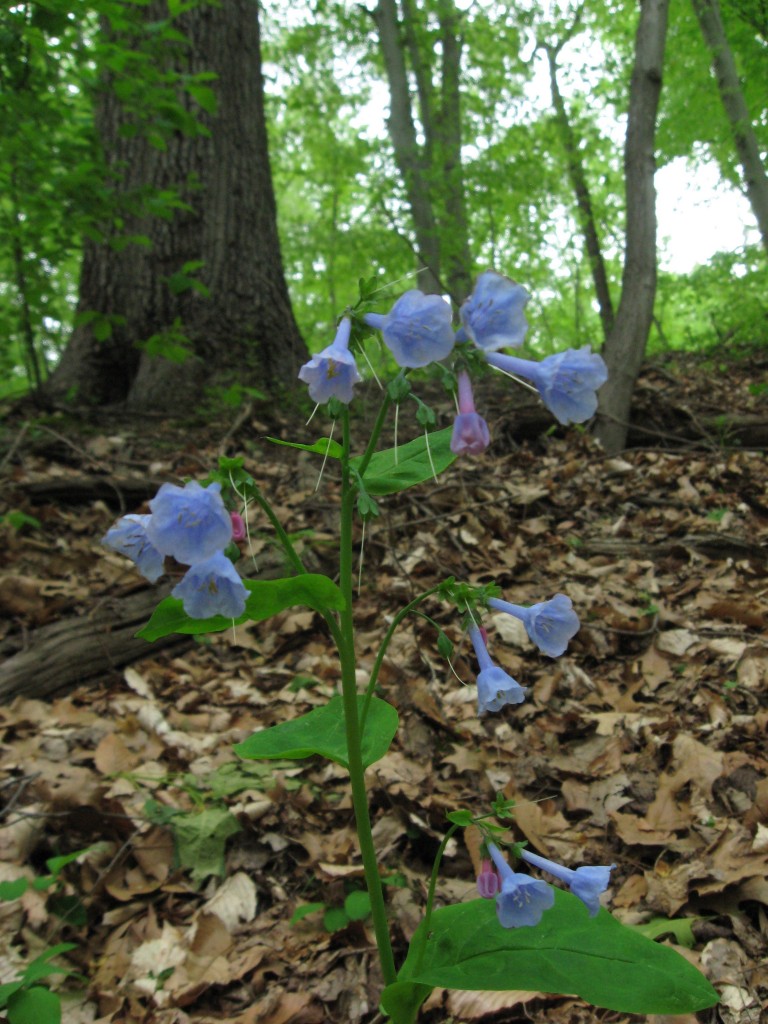
We did eventually find the trail that led us back out of the forest. Â What a great bunch of flowers to find growing in the forests of Roxborough!



I found a patch of what I THINK is trillium near by a patch of mayapples.
However the flower is gone and there is a cluster of berries still green with a partial paper pod still on it. Would trillium do that? The leaf has three sections and looks to be a lily type…not bush or vine.
Sounds like Jack in the Pulpit, Arisaema triphyllum to me. They have three leaves, fruit bearing specimens have two sets. Let us know what you find!
What a lovely post and blog. So glad you’re enjoying the woods at the Schuylkill Center. Do you have a twitter account? If so, I’d love to follow you. I handle marketing & PR for the Schuylkill Center.
Thank-You, Naomi. We do not have a twitter account, perhaps we should look into having one, especially if it means we could further our message about natural areas and native plants. We set up our website in December of 2010 and have not altered its basic appearance since, however we just add content, pictures and the discussion of them as we make our adventures through nature.Thank you for your suggestion, definately something to think about. You can still follow us on the sanguine root, wordpress has a button and a small form to fill out to receive e mails or I can put you on our email distribution list.
Check out this website–you can document your plant and animal discoveries (where, what & when):
http://www.projectnoah.org/
The Shooting Star is totally beautiful, and your pix do it justice! I love this plant, have never seen it before.
We have two in our garden, and they are Fab-O. A native spring wildflower. It was a nice surprise to see it growing in the woods.
Hi!
I’m glad to learn of your efforts. I found your site via Google when trying to learn if Lonicera sempervirens can be safely grown up trees (“safely” for the tree). Do you know?
FYI, the bottom picture on this page is mislabeled. It is, as you know, Mertensia virginica, which, I just learned in an Edible Forest Gardening workshop, has edible leaves.
Keep up the good efforts!
Paco
Paco, Thanks for the heads up on the caption, which has been corrected.
Your question is interesting. The Lonicera sempervirens has evolved growing on trees, and whenever we see the vine in a natural setting, it is winding up a tree,but not choking it out. The vine does not ever become aggressive and growing over and smothering other plants, from our experience. We saw one in Augusta Georgia wound pretty tight around a young redbud tree, and wondered about that situation. The Lonicera sempervirens grows in areas where there is a hole in the canopy, or on the edges of woodlands, and we associate it with Sassafrass and Tulip Poplar, pioneer, early successional forest trees. These are the trees that are found in the area of Morris park where the vine is found. There is one vine that is growing up a mature oak tree, and it has reached a height of about 25 feet, and has magnificent flowers.
The choking habit of the Lonicera japonica that has killed so many saplings in disturbed urban forests, such as Morris Park is not a problem with the sempervirens, in our experience. That said, it does appear that the vine could potentially have a negative impact on saplings in certain situations.
In a garden setting, to achieve the most naturalistic scene, It would be a great idea to grow the sempervirens up a well established young native tree that is in a sunny location. A very young sapling may not be appropriate. This would create a truly natural garden. Such trees as the tulip, sassafrass, and the American elm come to mind.
I would stay with the straight species however. There is a cultivar in our alley that is bushy and dense, and would surely dominate and smother any tree. Also, monitoring the vine yearly; if it is found to be constricting into the bark, than it may need to be cut back.
The hummingbird habitat this vine creates is a vital component of our vision of the native garden, and a driving component of our environmental restoration efforts. Thank you for your thoughtful question!